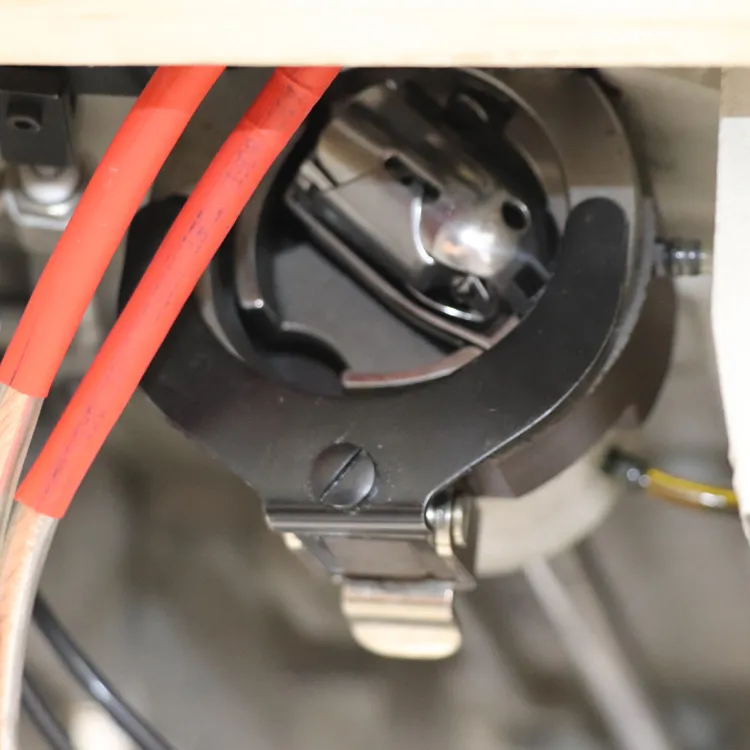Understanding the Functionality of a Compound Feed Sewing Machine in Textile Industry
Understanding Compound Feed Sewing Machines
In the realm of industrial sewing, various machines are designed to cater to different fabric types and sewing techniques. One of the most versatile and efficient types of sewing machines is the compound feed sewing machine. This machine is highly regarded for its unique feeding mechanism, which enhances the sewing process by accommodating multiple layers of fabric, making it particularly useful in heavy-duty applications.
What is a Compound Feed Sewing Machine?
A compound feed sewing machine is a specialized sewing device that employs a combination of different feeding methods. Typically, it integrates three types of feeds needle feed, walking foot feed, and drop feed. Each of these feeding mechanisms plays a significant role in ensuring that the fabric moves smoothly through the machine during the stitching process.
1. Needle Feed This mechanism ensures that the needle itself moves the fabric slightly as it penetrates the material, providing precise control over the stitching position. This is particularly helpful for sewing multiple layers or thicker materials, as it reduces the risk of slipping.
2. Walking Foot Feed The walking foot moves in synchronization with the needle, pulling the material along as it sews. This feature minimizes fabric shifting and allows for more even feeding, which is essential when working with slippery or quilted fabrics.
3. Drop Feed This feed mechanism can be adjusted or disengaged to allow the fabric to move freely under the needle. Drop feed can be advantageous when sewing intricate designs or free-motion embroidery, giving the operator more control.
Advantages of Compound Feed Sewing Machines
The advantages of compound feed sewing machines are numerous, making them a popular choice among professionals in various industries. Here are some key benefits
- Versatility Compound feed machines can handle a wide range of materials, from lightweight fabrics to heavy leather, making them suitable for industries such as fashion, upholstery, and automotive
.- Reduced fabric shifting By combining multiple feeding mechanisms, these machines significantly minimize the problem of fabric shifting, which can lead to uneven seams and wasted material.
what is compound feed sewing machine

- Enhanced Precision The precise feeding action provided by the needle and walking foot feeds ensures that stitching is maintained consistently, even when working with difficult materials.
- Increased Productivity Due to their efficiency and ability to handle multiple fabric layers at once, compound feed sewing machines often speed up the production process, leading to higher output in manufacturing environments.
Applications of Compound Feed Sewing Machines
Compound feed sewing machines are employed across various sectors. Here are some common applications
- Apparel Manufacturing In the fashion industry, these machines are invaluable for crafting garments with varying fabric weights and textures, promoting uniformity in stitching.
- Upholstery When working with heavy fabrics like vinyl or leather, compound feed machines allow upholsterers to attach intricate designs without the risk of fabric distortion.
- Automotive The automotive industry utilizes these machines to stitch seat covers and other interior components, where durability and precision are critical.
- Outdoor Gear Manufacturers of tents, backpacks, and outdoor clothing rely on compound feed machines to sew tough materials that can withstand harsh environmental conditions.
Conclusion
In summary, the compound feed sewing machine is an essential tool for any industrial sewing operation that requires versatility, precision, and efficiency. Its unique feeding mechanisms allow for the effective handling of a variety of materials, making it indispensable across multiple industries. As technology continues to advance, these machines are likely to evolve further, enhancing capabilities and improving productivity even more. For those in the sewing profession, understanding the benefits and applications of compound feed sewing machines opens up new opportunities for creativity and innovation in their work.
-
Boost Production Efficiency with a Pattern Sewing MachineNewsAug.29,2025
-
Industrial Excellence with the Best Heavy Duty Sewing MachineNewsAug.29,2025
-
Precision and Power with the Best Pattern Sewing MachineNewsAug.29,2025
-
Reliable Bulk Packaging Starts With the Right FIBC Sewing MachineNewsAug.29,2025
-
Advanced Packaging Solutions: Elevate Productivity with Jumbo Bag Sewing Machine and Industrial Stitching EquipmentNewsAug.29,2025
-
High-Performance Solutions for Bulk Packaging: FIBC Sewing Machine and MoreNewsAug.29,2025
-
Maximize Efficiency with an Industrial Cylinder Arm Sewing MachineNewsAug.28,2025


























